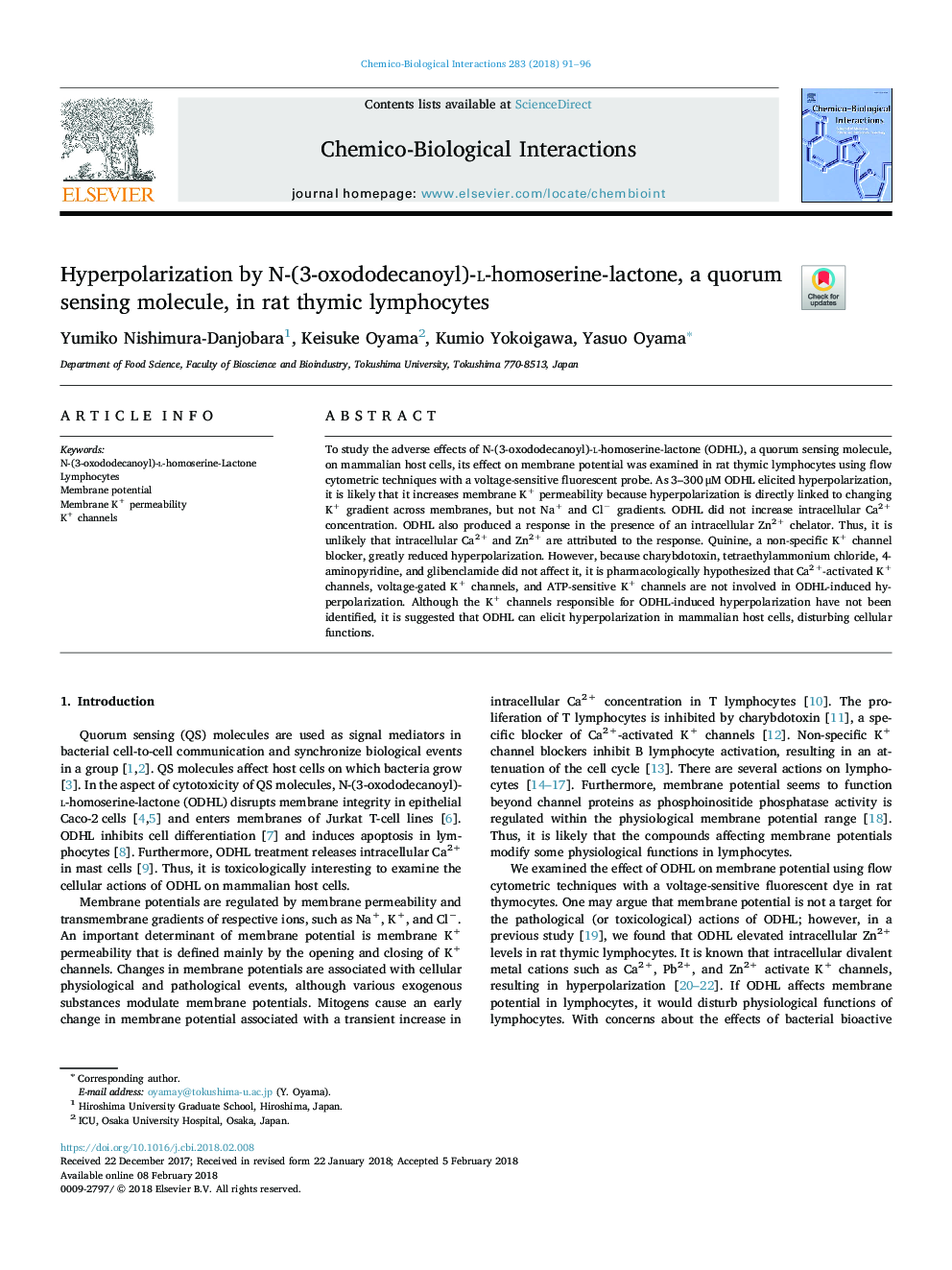| Article ID | Journal | Published Year | Pages | File Type |
|---|---|---|---|---|
| 8544983 | Chemico-Biological Interactions | 2018 | 6 Pages |
Abstract
To study the adverse effects of N-(3-oxododecanoyl)-l-homoserine-lactone (ODHL), a quorum sensing molecule, on mammalian host cells, its effect on membrane potential was examined in rat thymic lymphocytes using flow cytometric techniques with a voltage-sensitive fluorescent probe. As 3-300â¯Î¼M ODHL elicited hyperpolarization, it is likely that it increases membrane K+ permeability because hyperpolarization is directly linked to changing K+ gradient across membranes, but not Na+ and Clâ gradients. ODHL did not increase intracellular Ca2+ concentration. ODHL also produced a response in the presence of an intracellular Zn2+ chelator. Thus, it is unlikely that intracellular Ca2+ and Zn2+ are attributed to the response. Quinine, a non-specific K+ channel blocker, greatly reduced hyperpolarization. However, because charybdotoxin, tetraethylammonium chloride, 4-aminopyridine, and glibenclamide did not affect it, it is pharmacologically hypothesized that Ca2+-activated K+ channels, voltage-gated K+ channels, and ATP-sensitive K+ channels are not involved in ODHL-induced hyperpolarization. Although the K+ channels responsible for ODHL-induced hyperpolarization have not been identified, it is suggested that ODHL can elicit hyperpolarization in mammalian host cells, disturbing cellular functions.
Related Topics
Life Sciences
Environmental Science
Health, Toxicology and Mutagenesis
Authors
Yumiko Nishimura-Danjobara, Keisuke Oyama, Kumio Yokoigawa, Yasuo Oyama,
